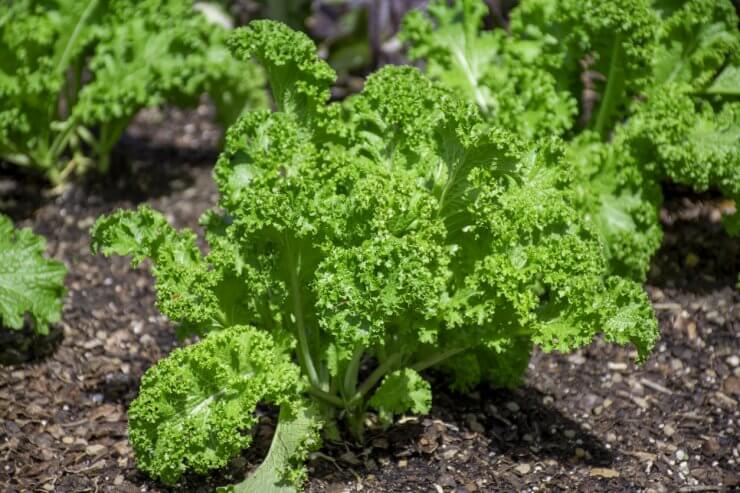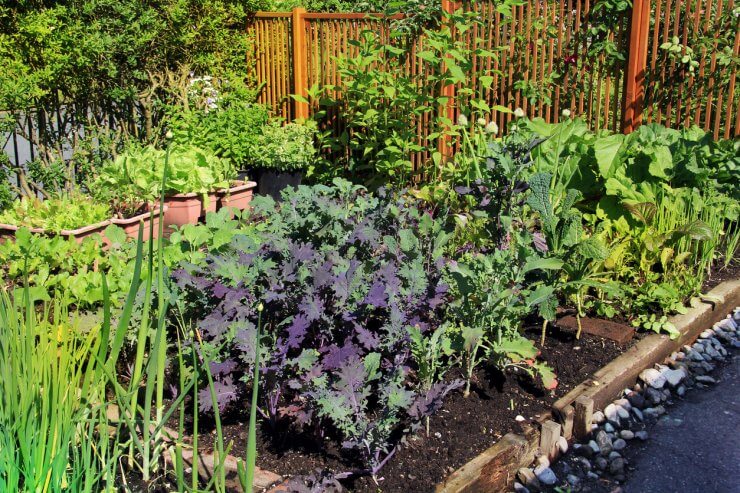
Kale growing in the garden
Planting kale is easy. As soon as the soil is workable after your last frost, direct-sow your seeds about a quarter inch in the ground in rows 18 inches to 2 feet apart. When your seedlings are 2 to 3 inches tall, thin them out to give them 8 to 12 inches of space.
You can also start your kale seeds indoors if you have a shorter growing season. Start them about four weeks before your expected last frost for a spring crop; or in June for a fall planting.
Don’t forget to harden off your seedlings before you transplant them. See Growing Kale from Seed or Seedlings for details on the hardening off process. Transplant your seedlings about 8 to 12 inches apart, in rows 18 inches to 2 feet apart. Of course, if you plan to harvest your kale just for baby leaves, you can put your seedlings as close as 4 inches apart in the row.
And in order to have a successful kale crop, you want to make sure you avoid planting them in soil where you previously grew any member of the Brassica genus or cole crops. Good crop rotation means not planting any Brassicas in the same place for four years.
Now, if you’re planting in raised beds, one approach to crop rotation is to replace the soil. You need to replenish your raised bed soil every year anyway. So if you have limited space and you’re a big fan of Brassica crops, plan to prepare your bed with fresh soil.
Companion Planting

Raised bed vegetable garden growing kale and other companion plants
Companion planting near your kale plants can help keep weeds away. You can also grow more leafy greens in the same area—as long as they’re not in the Brassica genus. Good choices are lettuce, spinach, swiss chard, and even celery and sweet peppers. These plants don’t attract the same pests as kale. And there you have it—instant salad!
Plants to avoid planting with kale include strawberries, which can slow the growth of your kale. The other plants to avoid are anything else in the Brassica genus, like bok choy, broccoli, Brussels sprouts, cabbage, cauliflower, and collard greens.
How do you plant your kale? Do you include companion plants with your kale? Please share your ideas with us.


 Previous
Previous

